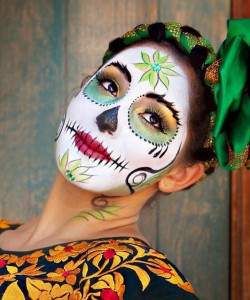Despite the fact that many people around the world know about Halloween, there are still some misconceptions about the holiday.
A popular holiday in America, Halloween is also celebrated in many parts of the world because it is often depicted in movies and TV shows. Many countries have adopted Halloween and the traditions associated with it. Despite its growing popularity, there are many misconceptions about the holiday. Here are just a few:
Day of the Dead = Halloween
Mexico’s festive Day of the Dead (Día de los Muertos in Spanish) is not their version of Halloween. Instead, it’s a modern holiday whose origin lies in Aztec customs, combined with minor Catholic holidays brought over by the conquistadores. Originally, the Aztecs set aside this day to honor the deceased and welcome the temporary return of their spirits. Today, the essence of the ancient holiday remains, but it has evolved to include elaborate costumes representing legendary figures such as the Lady of the Dead (more commonly known as La Calavera Catrina), and making edible candy skulls for both the living and the dead.
Halloween is American
Not really. Its origins are Celtic and it only became popularized in the U.S. in the mid 1900’s. It was brought to North America by Irish immigrants, who had gotten the concept from the old Celtic Pagan ritual called Samhain. Celebrations of Samhain included sacrificing crops and sometimes animals, as well as wearing animal masks. Also, it often involved fortune-telling around a bonfire to help lift spirits in preparation for the long and dark winter ahead.
Halloween is a dangerous holiday
Actually, although most police departments warn parents about the possibility of tampered treats such as razor blades in candy apples, and marijuana edibles that resemble candy, etc. Statistically speaking, these instances are extremely rare and often have alternate causes which happened to coincide with the date. Of course, parents should be aware of the possible dangers, and should accompany younger children to ensure their safety while trick or treating.
Trick or treating has always been part of Halloween
Actually, trick or treating as we know it today is not how it first began. As Samhain evolved into All Hallows Day, the poor would go around town knocking from door to door, begging for food in exchange for prayers for the dead. The Irish brought the general spirit of the tradition with them, but over time the holiday evolved into more of a children’s holiday. Needless to say, children no longer go up to strangers’ doors and offer to pray for their dead (in exchange for candy corn)…
Pumpkins = Halloween
Like many of the other components of Halloween, pumpkins are also a rather new addition to the holiday. In Ireland the vegetable of choice for Halloween was the turnip. Jack o’ lanterns were originally carved out of large turnips, but when European immigrants arrived in the United States, they found that pumpkins were easier to carve, thus resulting in the change. The abundance of pumpkins in the New World also helped to make this a preferred choice. Today, selecting a pumpkin from a pumpkin patch, and decorating or carving is a central part of celebrating Halloween for many.
About Language Connections:
Language Connections is one of the top language service companies in the US. Over the last 30 years, we’ve focused on providing the best business translation services, interpreting services, as well as interpreter training and customized language training programs. In addition to top-tier corporate language training, we offer certified corporate interpreters and professional business translation services in 200+ languages. Our network includes linguists with backgrounds in all major industries. They’re ready to meet your needs, whether they’re for technical translation services, legal translation, government translation services, international development translation services, education translation services, life sciences translation, or something else. Reach out to us today for a free quote on our cost-efficient and timely translation services, interpreters, or other linguistic services.
Language Connections Inc.
2001 Beacon Street, Suite 105,
Boston, MA 02135
Phone: +1-617-731-3510
Email: service@languageconnections.com






